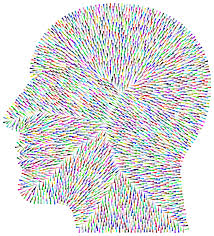What Personality Clusters Reveal About BPD and Why It Matters for Carers
-
by
Dr Constantina Katsari
- No Comments on What Personality Clusters Reveal About BPD and Why It Matters for Carers
Borderline Personality Disorder (BPD) is a complex mental health condition. People with BPD can show very different symptoms, and no two people experience it in the same way. A recent study from Sweden looked at 141 people with BPD to understand these differences better. The researchers used a questionnaire called the Swedish universities Scales of Personality (SSP) to explore personality traits like anxiety, impulsivity, aggression, and emotional control.
They also measured how severe each person’s BPD symptoms were, how well they could regulate their emotions, and whether they had symptoms of anxiety or depression. This allowed the researchers to get a fuller picture of each individual, not just the BPD diagnosis alone.
Three Types of BPD The researchers found that people with BPD could be grouped into three types, or “clusters,” based on their personality traits. These clusters showed different patterns in how BPD symptoms showed up and how the people coped with distress.
The first group had fewer and milder symptoms. They didn’t get angry easily and didn’t feel overly anxious or withdrawn. This group was called the “lower psychopathology” group, meaning they were coping better overall. Their personality profiles were closer to the general population, and they had fewer problems with emotion regulation or depression.
The second group showed more impulsive and aggressive behavior. They were more likely to act out when upset, take risks without thinking, and have trouble staying calm. This group was called the “externalizing” group because they expressed their distress outwardly, through their actions and emotions.
The third group was very different. These individuals kept their feelings inside. They felt anxious, avoided people, and found it hard to express themselves. They also had low energy and were more likely to be unemployed or on long-term sick leave. This group was called the “internalizing” group because they turned their pain inward.
Deeper Differences Between the Groups The study found that these groups weren’t just different in how severe their symptoms were—they also had very different ways of experiencing and responding to stress. People in the internalizing group had high levels of emotional sensitivity and were often overwhelmed by feelings of anxiety and sadness. They tended to avoid conflict and found it hard to ask for help.
People in the externalizing group, on the other hand, reacted quickly and strongly to stress. They might get angry, break rules, or say things they later regret. They were also more impulsive, which means they acted on their feelings without thinking them through.
The lower psychopathology group still met the criteria for BPD, but their symptoms were less intense. They had more emotional stability and were less likely to be overwhelmed by anxiety or anger. Even so, they still experienced challenges and needed support.
Why This Matters This study is important because it shows that BPD doesn’t always look the same. Some people may seem quiet and withdrawn, while others may seem angry or reckless. Others might seem mostly fine on the surface but still struggle inside. This means that understanding how a person experiences BPD can help them get the right kind of support.
The research also supports a new way of diagnosing BPD that combines information about how severe the symptoms are and what kind of personality traits are involved. This approach is already being used in the ICD-11, an international guide for diagnosing mental health conditions. It helps doctors and therapists match treatments more closely to a person’s needs, rather than using a one-size-fits-all approach.
Treatment and Support The study’s findings can also help improve treatment. Right now, one of the most common treatments for BPD is Dialectical Behaviour Therapy (DBT). DBT works very well for people who struggle with impulsivity and emotional outbursts—like those in the externalizing group. But it may not be as helpful for people in the internalizing group, who often avoid conflict and have trouble expressing their feelings.
An alternative called Radically Open DBT (RO DBT) is designed for people who over-control their emotions. This approach could be more helpful for people in the internalizing group. It focuses on helping people feel safe enough to be open and vulnerable, rather than shutting down or isolating themselves.
What It Means for Carers If you are caring for someone with BPD, this research can help you understand them better. A loved one who is always anxious and avoids conflict might need a different kind of support than someone who reacts with anger or impulsive decisions. Some people might not seem to need much help at all but still benefit from gentle support and structure.
Knowing that there are different types of BPD can also help carers feel less confused or frustrated. It explains why advice that works for one person with BPD might not work for another. It also helps carers speak up when they feel a loved one is not getting the right kind of care.
Carers can also benefit from understanding the concept of emotional regulation. Whether your loved one acts out or shuts down, difficulties with emotions are at the heart of BPD. Supporting someone in learning to manage those emotions—while also taking care of yourself—is an important part of the journey.
In Summary This study found that people with BPD fall into three groups: those with fewer symptoms, those who act out their distress, and those who turn it inward. These differences matter for how BPD is diagnosed and treated. For carers, the findings offer a way to better understand and support a loved one with BPD—by seeing the person behind the label.
BPD is not one single condition. It is a collection of struggles that can look very different depending on the person. Recognising those differences is the first step toward more compassionate care, better treatment, and more hopeful outcomes.
Source: Oladottir, K., Wolf-Arehult, M., Ramklint, M., & Isaksson, M. (2022). Cluster analysis of personality traits in psychiatric patients with borderline personality disorder. Borderline Personality Disorder and Emotion Dysregulation, 9(7). https://doi.org/10.1186/s40479-022-00184-2
💬 Caring for someone with BPD?
👉 Book a FREE One2One support session
🧠 Join our FREE webinars and peer groups
📩 To book email us at: info.bpduk@gmail.com
Discover more from BPD UK
Subscribe to get the latest posts sent to your email.




